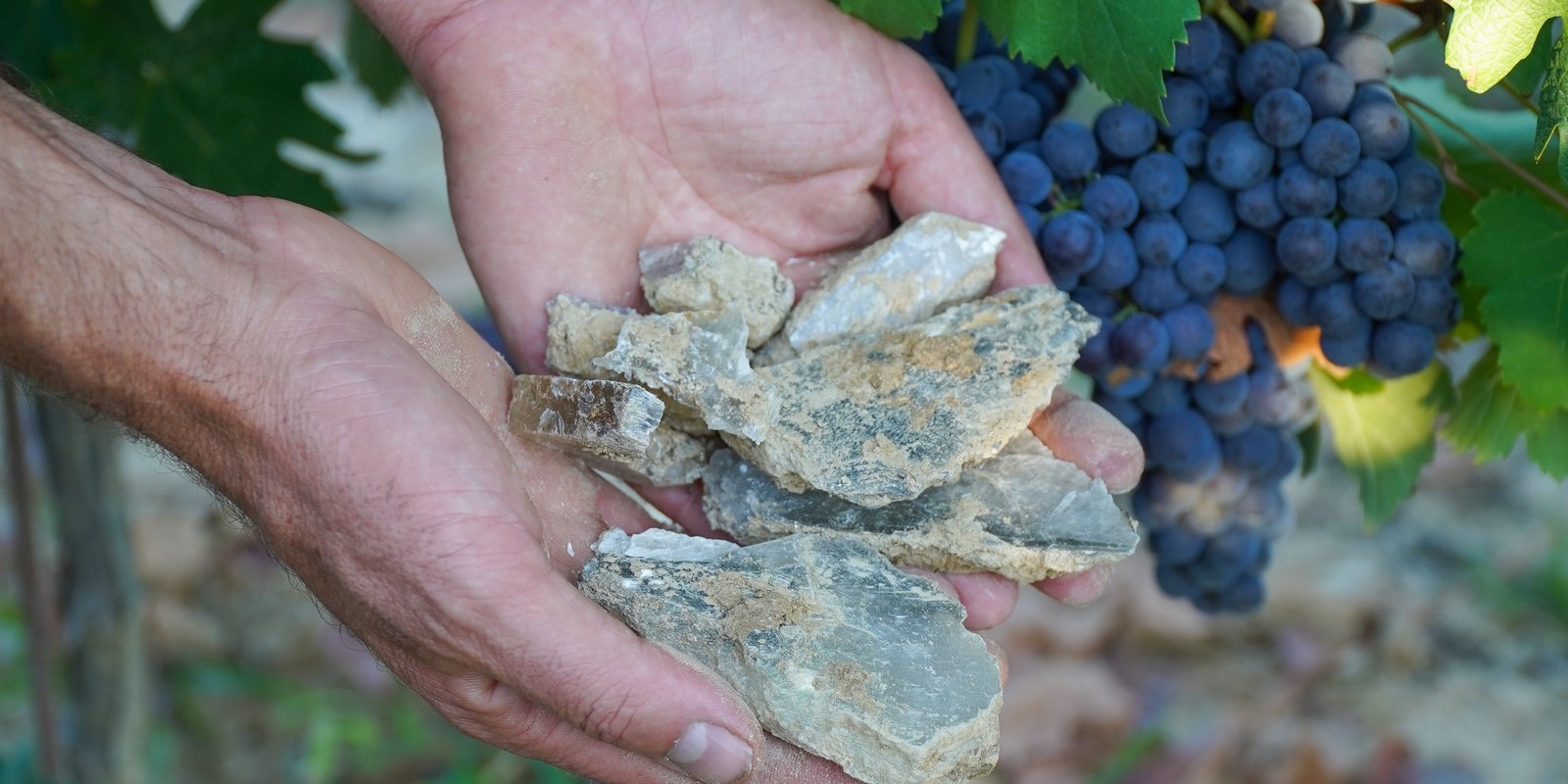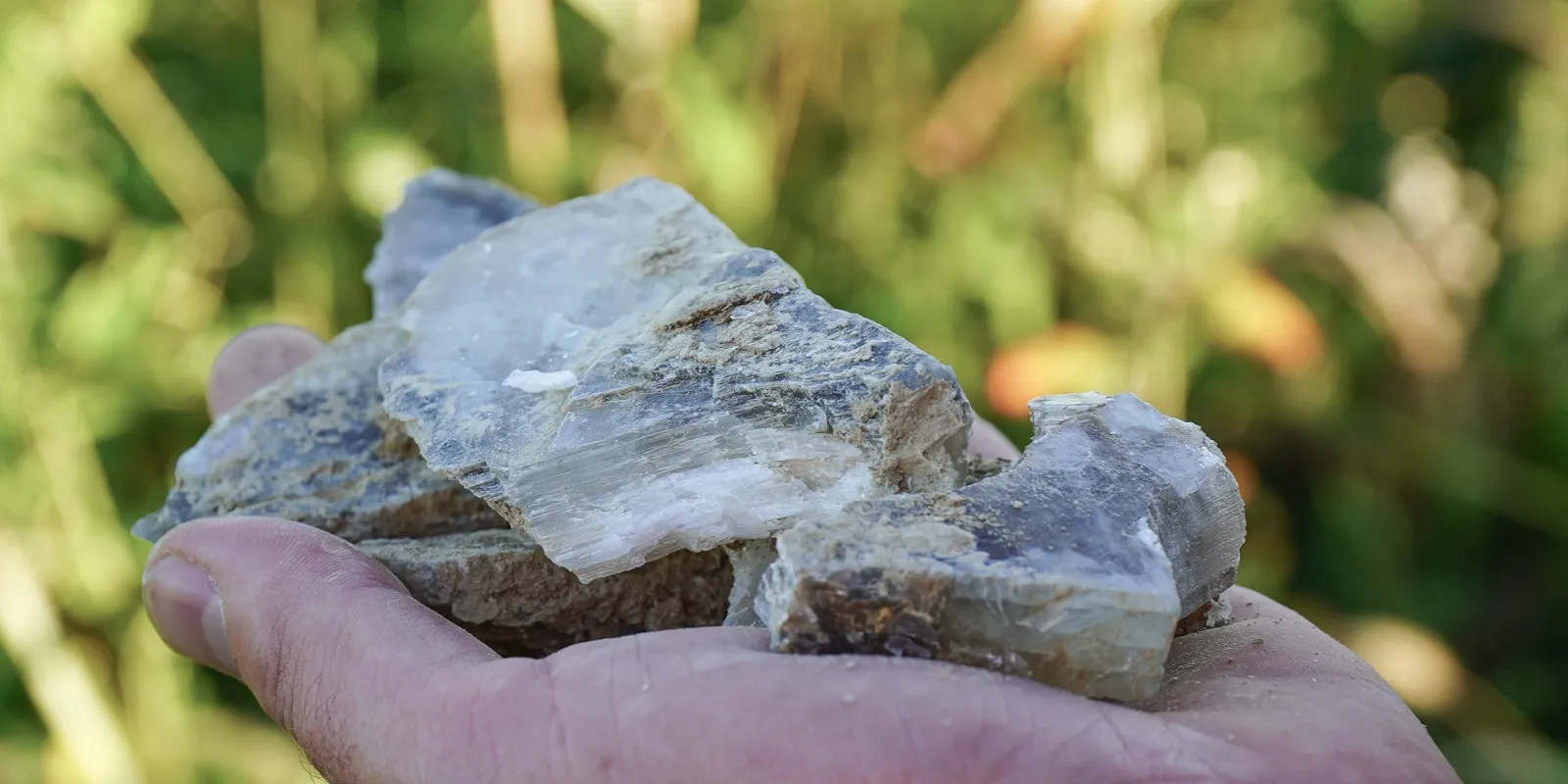Verduno: the origin of a unique territory
An unusual way to explore a territory is to start with what is under our feet, the soil and rocks. Soil, a key element for viticulture as well as for all life on the planet, is a complex subject that requires an in-depth study of other disciplines such as geology and climatology in order to grasp its fundamental essence and the dynamics that regulate its functions. Soil is the most superficial part of the earth’s crust and it forms the basis of life, being the substrate explored by the roots of plants, in our case the vine.
The depth of the soils planted with vines in the Verduno area averages at around 1.20 metres. Underneath is the rock, which represents the matrix from which the soils originated, known, for this reason, as the mother rock. The soil inherits its basic components from the mother rock and it is important to examine its characteristics in depth because there is a geological variability in Verduno that determines two different “worlds”. This said, all the rocks in the area share the same sedimentary origin, having been formed by the accumulation of sediments in a marine or salt-water lagoon environment. While both belong to the Miocene, they originate from two separate geological phases.
Laminated Sant’Agata Fossil Marl
The first formation consists of Laminated Sant’Agata Fossil Marl (dating back around eight million years, to the Tortonian period). These are rocks organised in very thin layers, made up of fine materials such as silt (60%) and clay (30%) mixed with a little sand (about 10%). They are also rich in limestone (calcium carbonate) resulting from direct precipitation from sea water and small fossil shells of marine microorganisms. The splendid fish fossils preserved, amazingly, in the thin layers of marl are also well known and include the Santa Vittoria d’Alba whale, found by this writer in the bed of the River Tanaro on the opposite bank to that of Verduno. The soils that develop on this formation inherit its texture, retaining more or less the same percentages of sand, silt and clay, and the substantial quantity of limestone (around 25%). The vine responds to these fine soils with a concentration of noble substances in the musts, while maintaining an extraordinary balance that leans towards elegance, achieved as a result of the combination with the microclimate, which we will talk about later.
Vena del Gesso Formation
The second Formation extends westwards from the ridge on which the village of Verduno stands, as far as the River Tanaro. This geological formation is named the Vena del Gesso or, in English, the Vein of Gypsum, because it consists of marl alternated with beds of gypsum crystals (Calcium sulphate). It has long been the subject of intense study, having been produced by an event that radically disrupted the entire Mediterranean Basin about six million years ago, the Messinian salinity crisis. During this phase, the Mediterranean found itself isolated from the ocean and underwent an intensive evaporation process that lowered the sea level by more than 1,500 metres and led to the formation of salt lagoons where the gypsum crystals that we find today in large beds interspersed between the marl were deposited. The soils that develop on this formation have a texture similar to Sant’Agata Marl, enriched with a considerable amount of gypsum which acts as a natural fertiliser. The result is a richness that is also superior in terms of its capacity to retain water, resulting in a substantial vegetative boost for the vine, which translates into a vigour that persists even in the driest periods.
The climate
To understand the behaviour of the vine on these gentle hills, however, it is also necessary to investigate the second major player in the terroir, climate. Generally speaking, the Langhe enjoy a temperate semi-continental climate, with rather cold temperatures in winter and hot summers, followed by mild autumns until the end of October. Precipitation is concentrated in spring and autumn, although changes in the climate do not always respect this rule. These general indications, however, are not enough to understand this territory, as the vine is a sensitive plant and Nebbiolo in particular is extremely susceptible to changes in behaviour in response to small fluctuations in atmospheric humidity, temperature and exposure. This is where the thousand different expressions offered by this extraordinary grape originate, and Pelaverga is not far behind. There is something about Verduno that makes it unique within the Barolo appellation: its proximity to the River Tanaro. The fact that the river is so close means that the atmospheric humidity is higher than in the rest of the production zone and this is felt by the vines and reflected in the fruit. This aspect, together with the different altitudes, which vary from around 200 to over 400 metres above sea level, and the exposures that range from due south in the Monvigliero area to west along the lengthy slope facing the river, determines the character of Verduno’s wines, combining fine, white and dark, crystal-rich soils, in a succession of spice and elegance.
Our thanks go to Edmondo Bonelli for these details.


